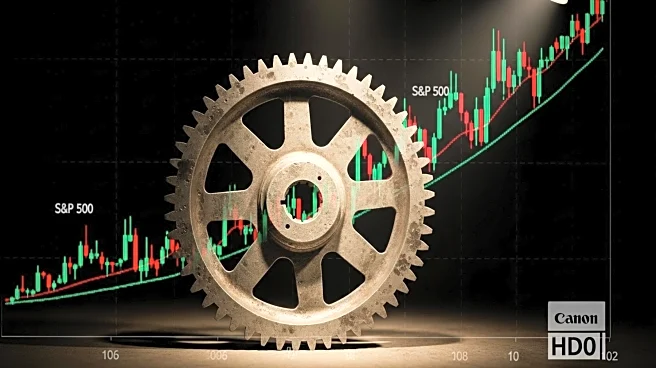What's Happening?
The Industrials sector is grappling with headwinds, including slowing business activity and rising material costs, while the broader S&P 500 continues to show resilience. Manufacturing activity has decelerated, with the S&P Global US Manufacturing PMI easing to 52 in September. Elevated material prices are squeezing profit margins, forcing companies to reassess strategies. The National Association of Manufacturers' Q3 2025 Outlook Survey highlights trade uncertainty and rising costs as primary concerns. This situation underscores the divergence between sector-specific pressures and overall market optimism.
Why It's Important?
The challenges facing the Industrials sector are significant as they impact profitability and growth prospects for manufacturers. The pressure from rising costs and slowing demand may lead to strategic shifts, including increased investment in automation and efficiency-enhancing technologies. Companies with robust operational efficiencies and adaptable business models may emerge as winners, while those with high cyclical exposure may struggle. This divergence highlights the importance of strategic agility and innovation in navigating economic headwinds.
What's Next?
Industrial companies are likely to focus on cost control, inventory management, and preserving liquidity in the short term. Strategic pivots may involve lean manufacturing principles and automation investments to reduce labor dependency. The divergence between resilient and vulnerable companies may widen, with those investing in digital transformation and supply chain resilience emerging stronger. Investors should monitor key economic indicators and company earnings reports for insights into how firms are managing these challenges.
Beyond the Headlines
The current pressures on the Industrials sector may accelerate long-term shifts, driving consolidation and technological adoption. The emphasis on supply chain resilience highlights the importance of robust sourcing strategies to mitigate future shocks. Regulatory and policy implications, particularly around trade and tariffs, will continue to influence sourcing decisions and market access. This period of pressure may lead to significant restructuring and innovation within the sector, setting the stage for future growth.










